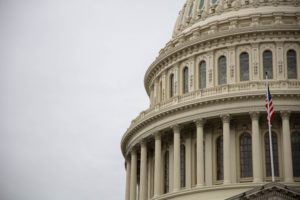
The following is adapted from More Good Jobs.
When a city struggles to create jobs, citizens tend to turn to the government to fix the problem. Politicians then attempt to allocate tax dollars for economic development or pass laws and regulations with the intent of stimulating job growth. However, as voters and taxpayers, we have to be asking – how often do these initiatives work out?
Not as often as they should. While many, if not most, elected officials are well-intentioned and truly want to do what they can to help stimulate job growth, the traditional paths fail to create results promised when initial announcements are made.
When we look at past examples of government initiatives and break down the go-to methods of economic growth, it becomes clear that not only do these approaches fall short, but the government might be the wrong entity to stimulate the economy entirely.
The Problem with Government Initiatives
First, let’s look at the traditional path the government takes to stimulate job growth: tax-dollar allocation and building properties.
There’s a core problem we see on both of these paths: the common belief that it is possible to create new jobs from the top down. Politicians tend to see job growth as something predictable and under their control, so we often encounter what I’ll refer to as the Field of Dreams mentality, a nod to the 1989 baseball film starring Kevin Costner. Think, “If we build it—a factory, office building, etc.—the jobs will come.”
At an abstract level, this sounds completely logical. The problem is that it doesn’t work in reality. Couple the “build it and they will come” belief with the short-term focus politicians have in order to impress voters before the next election cycle, and you have a recipe for a lot of impressive-seeming actions without substantial results.
Politicians approach the problem from this angle because that’s what they’ve done for the last fifty years, and it fits the mold of top-down behaviors that look good in a press release. However, they’re trying to solve today’s problem with an old set of tools.
A History of Failed Projects
You don’t have to look far to find examples of failed government job creation projects. One notable instance in recent years was the New York State Film Hub based in Syracuse.
In 2014, Governor Andrew Cuomo announced with great fanfare that the $15 million in taxpayer funds being invested to construct a new facility would create more than 350 high-tech jobs by having a university-operated hub blend cutting edge nano-technology with film production. “Hollywood comes to Onondaga County,” Cuomo said.
Yet, three years after opening, the gleaming 52,000 square foot building sat virtually empty, having been used for a few short projects, and never coming close to living up to the Governor’s hype.
In 2018, after failing to secure commercial tenants or traction with film projects, the state transferred title to the facility to Onondaga County for $1, effectively writing off the $15 million taxpayer investment in the ill-conceived belief that the government can create businesses and jobs by funding construction of a building – much less the larger film industry subsidy issue which corporate subsidy experts roundly criticize. “Every state analysis I’ve ever seen finds that taxpayers get back only dimes on the dollar from film production tax credits,” says Greg LeRoy of the D.C.-based corporate subsidy watchdog Good Jobs First.
Not only did the film hub project fail to create jobs, but it also showed how the cozy relationships between politicians and property developers have the potential for corruption to creep in. In this case, the film hub developer was the governor’s largest campaign contributor at the time and also the sole firm to submit a bid on the $15 million project.
A More Effective Way to Create Jobs
Patterns of “build it and they will come” and tax-dollar spending are not unique to New York State. They are repeated all over the country with similar results.
Politicians allocate taxpayer dollars to build a building in a heartbeat, but that effort does nothing to actually create jobs beyond the construction phase, nor does it have any impact on accelerating the launch of new startup companies.
What does work?
Despite the poor record of tax-and-construction projects, politicians need not be the enemy when it comes to creating good jobs. When they take the long-term view and understand the needs of entrepreneurs, public officials can be strong allies.
Most of them got into politics because they truly care about helping people, and if entrepreneurs like you help them see a better path to serve the community, some will get on board in ways that support job-growth ambition.
Most importantly, with or without politicians’ help, job growth and change needs to come from the bottom-up, not from the top-down. Entrepreneurs understand far better than politicians what creates jobs. Therefore, we can use time and resources to most efficiently change our local economies.
For more insights on how to transform local economies toward job growth in newer industries, you can find More Good Jobs on Amazon.
Martin Babinec founded NYSE-listed TriNet, a Silicon Valley cloud-based HR service, where he served as CEO for the company’s first twenty years. Relocating to his hometown of Little Falls, New York, he founded nonprofit Upstate Venture Connect, StartFast Ventures, and UpVentures Capital, all of which help grow, support, and invest in transforming Upstate New York’s economy toward job growth in the newer industries. As an independent candidate for New York’s 22nd Congressional District in 2016, Babinec also founded the Upstate Jobs Party (UJP) to influence political discourse on better solutions to grow jobs and reverse regional population decline.